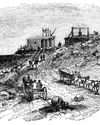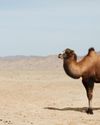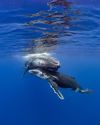
When a nominally civilian government was installed in Myanmar in 2011, and the ensuing years saw the country gradually opening up, there was cause for optimism. The Southeast Asian nation was hailed as the “last frontier” by foreign business leaders eager to secure a share of a promising emerging market. There was huge potential for investment in infrastructure and manufacturing, a youthful population of 60 million, poised to become consumers, and of course, vast untapped natural resources.
A lucky few had already caught a glimpse of some of these rich natural resources as early as 1997, when the Mergui Archipelago, an immense region comprising hundreds of tropical islands stretched out along Myanmar’s Andaman Sea coast, opened to divers travelling in boats from Thailand. Dozens of world-class dive sites began to be catalogued, including offshore sites such as “Black Rock” and “Western Rocky”. International dive magazines reported bustling reefs festooned with soft corals, abundant fish life, and big animals like sharks and many different species of rays, including mantas.
The archipelago’s “sea gypsies” – the Moken – completed the idyllic picture. We read about the self-sufficient, nomadic way of life they had led along the Andaman coast for hundreds of years. We learned of their subsistence lifestyle on small, wooden boats, foraging for food using spears – enough to feed their families with a little left over to trade for necessities. Numbering in only the thousands, these seafaring nomads had found a way to live in harmony with the ocean.
Denne historien er fra AG 159-utgaven av ASIAN Geographic.
Start din 7-dagers gratis prøveperiode på Magzter GOLD for å få tilgang til tusenvis av utvalgte premiumhistorier og 9000+ magasiner og aviser.
Allerede abonnent ? Logg på
Denne historien er fra AG 159-utgaven av ASIAN Geographic.
Start din 7-dagers gratis prøveperiode på Magzter GOLD for å få tilgang til tusenvis av utvalgte premiumhistorier og 9000+ magasiner og aviser.
Allerede abonnent? Logg på

Revealed Silver
Known in Latin as argentum, originating from the Sanskrit word argunas meaning \"shining\", silver is often an overlooked metal in comparison to gold, though it has properties that make it a unique and special element.

Celebrating the 2023 Rolex Awards for Enterprise Laureate: Liu Shaochuang
As a part of the Perpetual Planet Initiative, the Rolex Awards for Enterprise continues to expand the initiative’s growing portfolio, supporting exceptional individuals with innovative projects in areas such as the environment, science and health, applied technology, cultural heritage, and exploration.

The Treasures of Tahiti and the Journey of Giants
For decades, French Polynesia's beguiling islands have adorned travel brochures, alluring honeymooners with turquoise lagoons, overwater bungalows, and lush volcanic peaks. Some 7,000 kilometres from its closest neighbours, and spread over five main island groups, the French territory's real treasures are not just what you see in the splashy brochures. Get ready for untamed, wild, ocean encounters.

Asian Blades
Historically, swords served as crucial tools for warfare and symbols of social status, shaping military strategies and cultural identities across the region. Fascinating objects found in museums, these ancient items of silverware are just as likely to be found in private collections around the world

Bear Witness REVISITED
Through soulful eyes we see ourselves These creatures sad and splendid For though they be confined to bars Flesh bodies crushed, tormented Their spirits burn with freedom's fight Mad, somewhat demented... Like the rusting strands of metal twine That hold their fate suspended Cruelty is an irony A stage for man To play his hand In wickedness or wonder

A Spectrum Of Scarlet: The Symbolic Red Of Asian Flags
A common thread that unites many Asian flags is the prominent use of red, a colour rich with symbolism

Curry: A World of Flavour, Tradition, and Culture
From its humble beginnings in India, the concept of "curry" has evolved into a culinary language understood around the world

The Power Of Asian Red Fruits - Discover 10 Nutrient-Rich Gems Of The East
In the vast tapestry of Nature, Asia has gifted the world an array of unique and vibrant fruits, particularly those in shades of red. These scarlet-hued gems, packed with flavour and nutrients, not only add a burst of colour to your plate but also carry valuable health benefits. From antioxidant-rich goji berries to the exotic dragon fruit, let's explore some of the most popular red fruits from Asia and discover why they should be part of your diet.

Bhutan: A World Of Its Own
With its majestic monasteries, red-robed monks, charming rural villages, and vibrant festivals, the Kingdom of Bhutan is a Himalayan paradise that promises an enriching travel experience like no other

Take The Red Pill
From the vermilion torii gates of Japan to the famed rust-hued walls of India's Agra Fort, the burgundy robes of Burmese monks to scarlet chillies drying in the Bangladeshi sun, red is the quintessential colour of Asia.